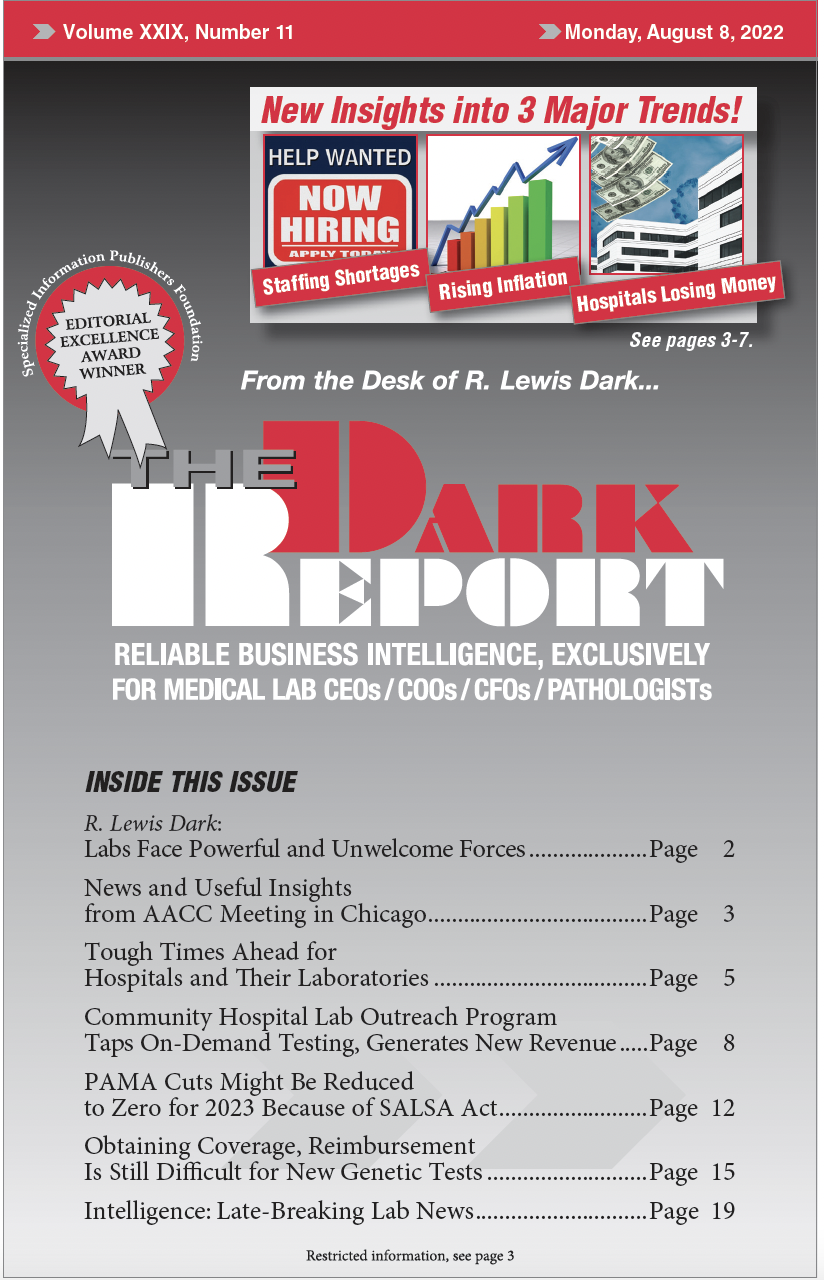CEO SUMMARY: There was plenty of positive energy last month when the 72nd Annual Scientific Meeting and Exhibition of the American Association of Clinical Chemistry (AACC) took place in Chicago. Attendees seemed pleased to be gathering and networking in person. However, there was recognition that the acute staffing shortage, combined with increasing inflation and deteriorating …
News and Insights from AACC Meeting in Chicago Read More »
To access this post, you must purchase The Dark Report.


